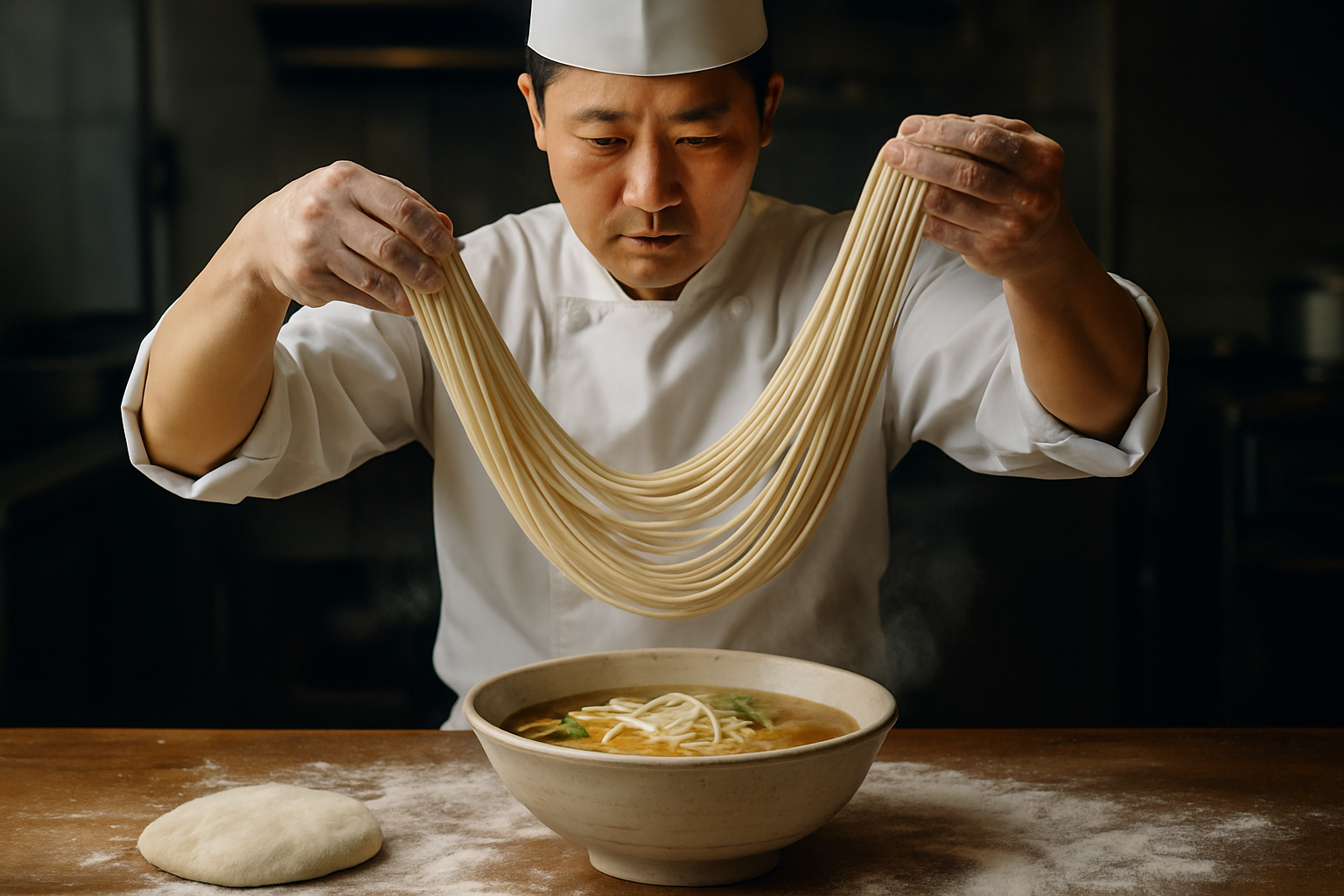Noodle Pulling: The Art of Hand-Stretched Perfection
Slurping up a bowl of hand-pulled noodles is like tasting history in motion. This ancient culinary technique, perfected over centuries, transforms simple dough into silky strands of gastronomic delight. Join us as we unravel the secrets behind this mesmerizing craft, exploring its cultural significance and the modern twists keeping it relevant in today's foodie landscape.

The key to successful noodle pulling lies in the gluten development. As the dough is stretched and folded, the gluten proteins align, creating a strong, flexible structure. This allows the noodles to be pulled to incredible lengths without breaking. The technique requires precise control of pressure and speed, with experienced noodle pullers able to create uniformly thin strands in a matter of minutes.
A Journey Through Time and Taste
Hand-pulled noodles have a rich history that spans thousands of years. Originating in China, this technique spread throughout Asia, evolving and adapting to local tastes and ingredients. In Lanzhou, a city in northwestern China, hand-pulled noodles became the star of a famous beef soup, now considered a national treasure.
As noodle pulling techniques traveled, they influenced cuisines far beyond China’s borders. In Japan, ramen noodles, while usually machine-made today, have roots in hand-pulled traditions. In Central Asia, lagman noodles showcase the technique’s spread along the Silk Road. Each region has put its own spin on the art, creating a diverse tapestry of noodle cultures.
The Science Behind the Stretch
Understanding the science of noodle pulling can help aspiring noodle artists perfect their craft. The magic happens at the molecular level, where gluten proteins in the wheat flour form long, elastic chains. This network of proteins traps water and creates the characteristic chewy texture of hand-pulled noodles.
Temperature plays a crucial role in the process. The dough must be warm enough to be pliable but cool enough to maintain its structure. Many noodle pullers use a resting period to allow the gluten to relax, making the dough easier to stretch. The hydration level of the dough is another critical factor, with different ratios of water to flour yielding noodles with varying textures and elasticity.
Modern Twists on an Ancient Art
While traditional hand-pulled noodles continue to captivate food lovers, innovative chefs are putting new spins on this time-honored technique. Some are experimenting with alternative flours, creating gluten-free versions using rice or buckwheat. Others are infusing the dough with unexpected flavors like squid ink, beetroot, or matcha.
In the world of fine dining, hand-pulled noodles are making appearances in surprising ways. Chefs are incorporating the theatrical element of noodle pulling into their dining rooms, turning the preparation into a tableside spectacle. Some are even using the technique to create unconventional pasta shapes or incorporating hand-pulled elements into molecular gastronomy creations.
The Future of Noodle Pulling
As we look to the future, the art of noodle pulling faces both challenges and opportunities. On one hand, the rise of automation in food production threatens to make hand-pulled noodles a rarity. However, the growing interest in artisanal foods and traditional techniques is creating a renaissance for this ancient craft.
Education and preservation efforts are crucial to ensuring the survival of noodle pulling. Cooking schools and cultural organizations are offering classes and workshops to pass on these skills to new generations. Meanwhile, food tourism centered around noodle culture is providing economic incentives for communities to maintain their traditions.
Noodle Pulling Insights
• The longest hand-pulled noodle on record measured over 3,000 meters in length
• Expert noodle pullers can create up to 16,384 strands from a single piece of dough
• The technique requires maintaining a consistent arm span of about 1.5 meters
• Hand-pulled noodles cook faster than machine-made varieties due to their uneven texture
• The ideal dough temperature for pulling is between 25-30°C (77-86°F)
In conclusion, noodle pulling is more than just a way to prepare food; it’s a living art form that connects us to culinary traditions spanning millennia. As we celebrate its past and embrace its future, let’s savor every slurp of these handcrafted strands, each one a testament to human skill and creativity. Whether you’re watching a master at work or attempting the technique yourself, hand-pulled noodles offer a unique window into the delicious intersection of culture, science, and artistry.





